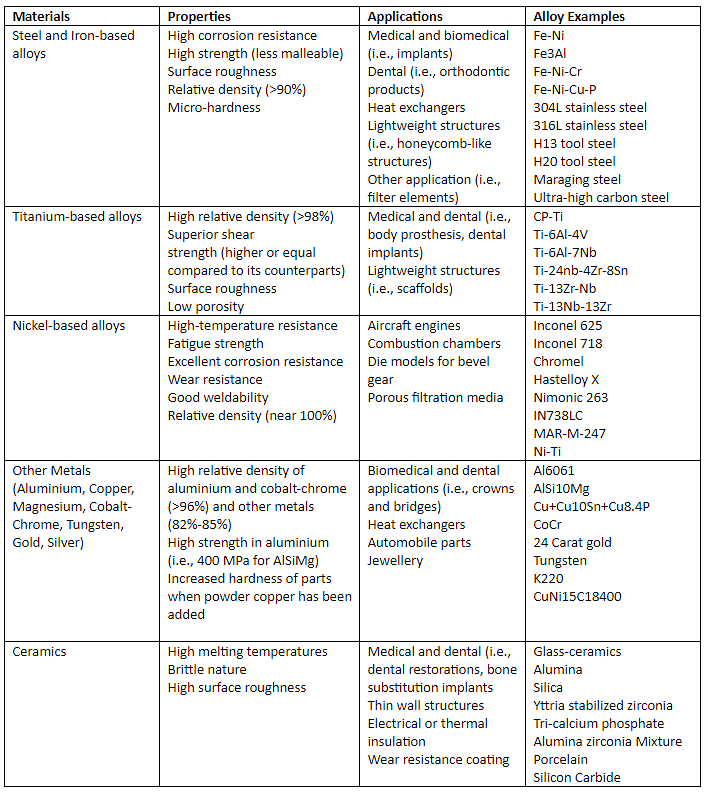Selective Laser Melting | Manufacturing Engineering - Mechanical Engineering PDF Download
Materials Used in Selective Laser Melting (SLM)
Selective Laser Melting (SLM) is an additive manufacturing (AM) technique where a laser beam selectively melts powdered materials to build intricate three-dimensional (3D) objects [1]. Known for its versatility, SLM can process a wide range of materials, with a strong focus on metals and alloys [2]. It finds applications across diverse industries such as aerospace, automotive, construction, food, and jewelry [3].
Common materials used in SLM include:
- Steel and iron-based alloys
- Nickel-based alloys
- Titanium-based alloys
- Aluminium alloys
- Alumina
- Silicon carbide
- Yttria stabilized zirconia
In this context, you'll discover:
- The principles of selective laser melting
- The variety of materials employed in the process
- Projections for the growth of the selective laser melting market
- Potential future applications of this advanced manufacturing technique
What is selective laser melting?
Selective Laser Melting (SLM) is an additive manufacturing technique where powdered materials are fused together using a high-power laser, layer by layer, to create intricate 3D models [1]. This method primarily utilizes metal powders as its base materials [2]. The process involves depositing a fine layer of metal powder onto a substrate plate, which is then selectively melted and solidified by the laser according to a computer-aided design (CAD) [2]. SLM is also recognized under other names such as laser powder bed fusion (LPBF) or direct metal laser melting (DMLM) [1]. Key considerations regarding SLM encompass both its advantages and limitations [4][5].

What materials are used for selective laser melting?
Initially, SLM applications were limited to cast iron, titanium, and nickel, chosen for their natural abundance, broad application potential, and cost-effectiveness. As SLM research advanced, additional metals such as aluminum, copper, cobalt, tungsten, and various alloys and composites were integrated [4]. Table 2 provides a summary of commonly used metal powders in SLM and their respective applications.
Table 2. Materials for Selective Laser Melting

|
52 videos|86 docs|29 tests
|
FAQs on Selective Laser Melting - Manufacturing Engineering - Mechanical Engineering
| 1. What is selective laser melting? |  |
| 2. What materials are used for selective laser melting? |  |
| 3. How does selective laser melting work? |  |
| 4. What are the advantages of selective laser melting over traditional manufacturing methods? |  |
| 5. What are the limitations of selective laser melting? |  |
















